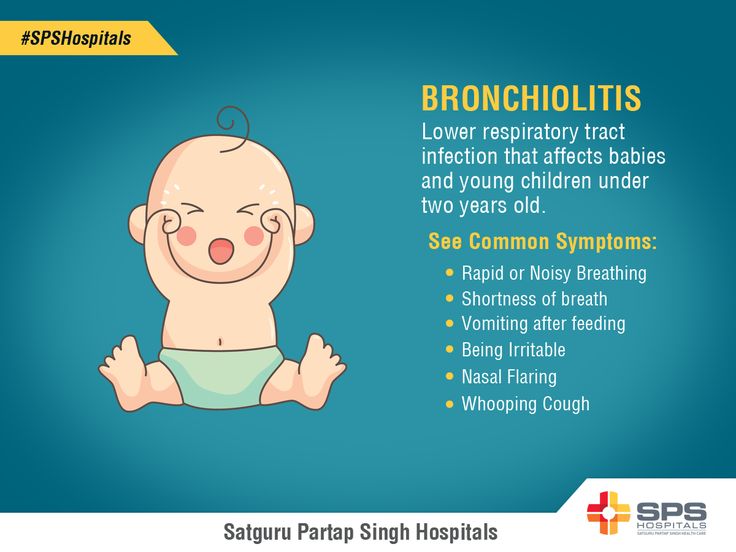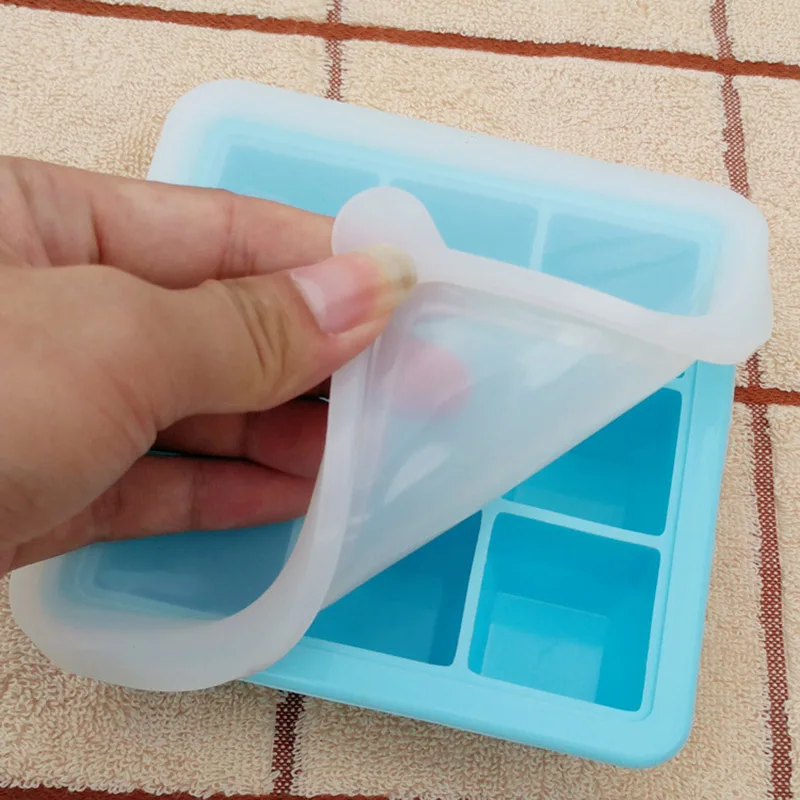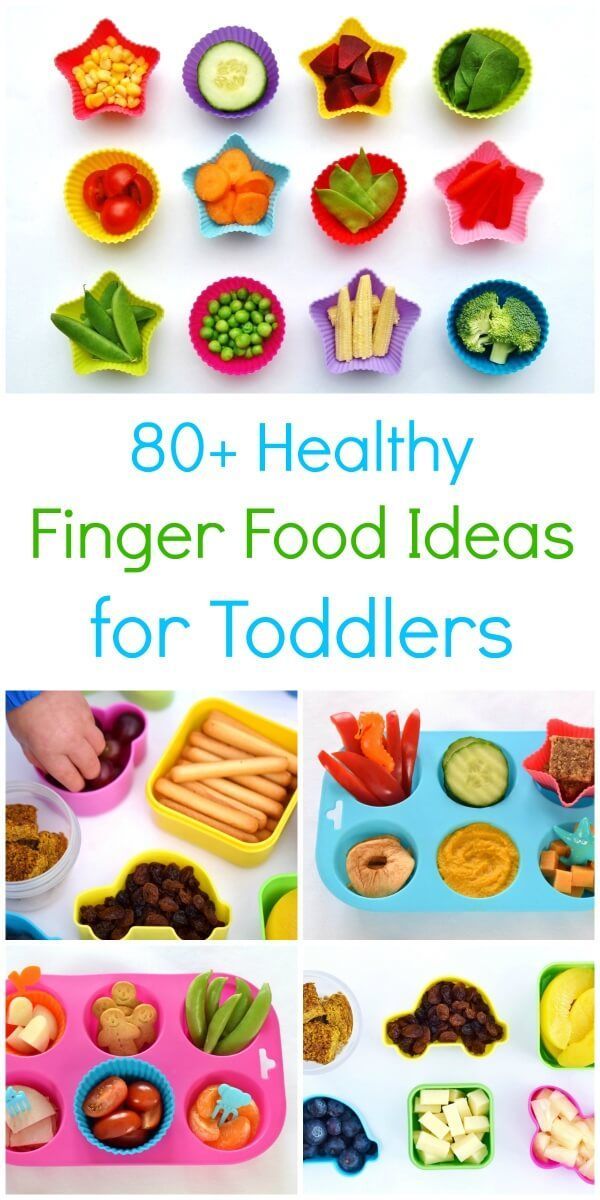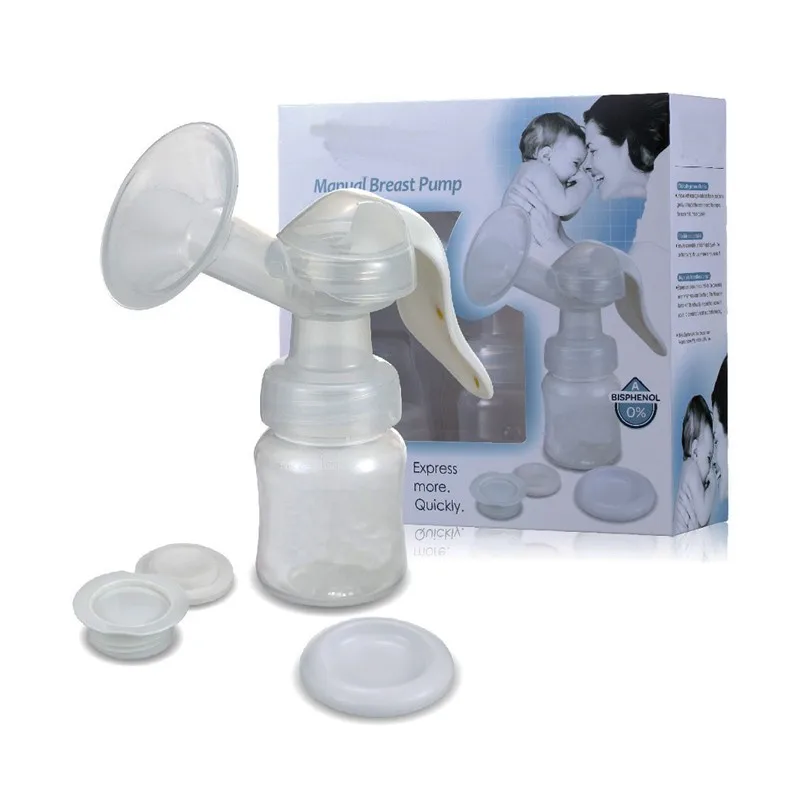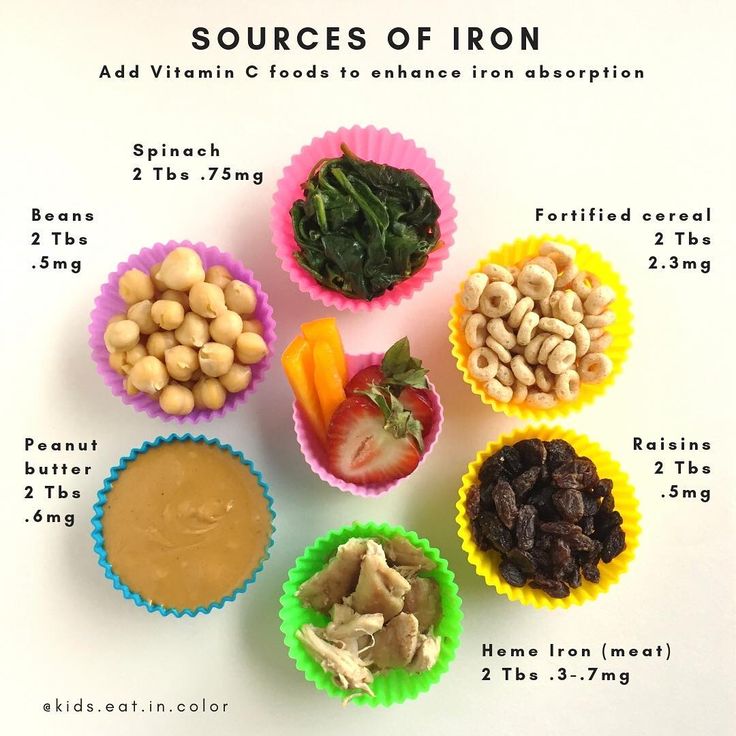Why does my baby thrash around when feeding
Thrashing Baby During Sleep & Breastfeeding (Causes & Solutions)
A thrashing baby could mean they’re shaking their head, throwing their hands and legs around, being fussy, or crankier in general. For a baby thrashing during breastfeeding, the reasons could be latching issues, fast let-down reflex, burping issue, overstimulation, nipple thrush, teething, acid reflex, and so on. If your baby thrashes during sleep, it might include reasons like pain or air infection, epilepsy, autism, neurological disorders, change in a sleep cycle, or colic. Treatment depends on the issue causing thrashing in your baby.
When you see your baby tossing and turning and just flinging their arms and legs about, there’s only so much you can do to calm them down. There’s confusion, and you don’t know what’s causing this or how to stop it.
This restlessness can be witnessed while your baby is breastfeeding or when they reach a stage when their sleeping schedule changes as they grow from a newborn to a toddler.
But often, it’s more than just a developmental milestone, and you want to understand and do everything to stop your baby from moving restlessly about.
Let’s see what the reasons might be behind such behavior of your baby and what’s causing them all this trouble with steps you can take to help them.
Baby thrashing during breastfeeding
When you notice your baby is pulling away, fussing about, throwing their head back or arms during breastfeeding, this is one such definition of thrashing. Your baby might seem helpless under such circumstances, and you don’t know what’s causing them to do it.
Below are some reasons why your baby seems uncontrollable right now and how you can help them:
Latching issues
It’s pretty standard for babies to latch to your breast, and in the beginning, it usually takes some time for them to get used to it. There’re multiple reasons behind this, and one of them is the slow let-down reflex.
Your body is still getting used to producing milk within seconds, and so your baby might react to it in the way of pulling their head away or might start wailing or crying when unable to latch on properly.
While the solution would be to keep trying until things work out, if even after a while, you cannot help your baby latch, there’re a few things you can do.
This includes stimulating your breast by massaging it, taking a warm shower, drinking a warm beverage, maintaining a calm environment, or just hugging your baby close to you to let the body naturally produce milk faster.
Fast let-down reflex
Another breastfeeding issue could be a fast let-down where the milk flow is more than what your baby can handle right now. Even too much of a milk flow is an issue, and your baby might throw their arms at you or pull back because they’re unable to swallow milk fast.
In such cases, you can change positions, get a nursing pillow, stop breastfeeding for a while or pump out some milk to maintain a steady flow.
Burping issue
For your baby, it’s challenging to communicate their issues to you. So if they need to burp while breastfeeding, they won’t be able to share this verbally but will do so by throwing around their arms, wailing, and basically thrashing about.
It’s important to understand that your baby needs to burp in between because this is something known as false fullness, where your baby swallows a lot of air while feeding and thinks they’re full, but in reality, they just need to burp.
It’s very uncomfortable for them, which might make them react this way, and once you burp them, they might want to go for a second feeding.
Overstimulation
Breastfeeding is a great bonding time between you and your baby, and when you try to do it somewhere where there’s a lot of noise and bright light, your baby is only right to be fussy or thrash around.
Imagine you having a meal and having to deal with noise around you. Nobody likes that, so keeping a peaceful environment around you is vital not to overstimulate your baby. You both need somewhere quiet and a bit shady so your little munchkin can feed in peace.
Nipple thrush
It’s as real as it can get when the issue you’re suffering from is nipple thrush, and it can be easily transmitted to your baby, which then turns into an oral thrush for your baby and vice-versa.
When experiencing thrush, you might have some symptoms like:
- Shiny or flaky skin on nipple or areola
- Itchy nipples
- Burning pain in the nipples
- Sore breasts
- Stabbing pain behind the areola
- Thrush in other areas of the body
Your baby is affected a lot when you’re experiencing nipple thrush. The list of reasons behind contacting a thrush goes is long, and so the important thing is to pinpoint the cause and eliminate it.
Of course, your baby wouldn’t want to breastfeed during this time and might revolt by not accepting to feed. So, visit your doctor and get yourself treated to get out of this vicious cycle of thrush.
Teething
Your baby could be in the stage when their teeth start to come out, and it can be painful and irritating to go through this stage. It’s unbearable if you don’t do something about it. They might bite at your nipple along with becoming fussy and flinging their arms about.
The best thing is to provide relief to their gums by giving them a chew toy, giving them calcium medications, and maybe following up on a few home remedies.
Breastmilk intolerance
Your baby could also have an intolerance towards breastmilk, and it’s not a surprise that they do so. They might not digest the lactose present in your milk and are uncomfortable due to this digestive issue.
Although mother’s milk is recommended for the first six months, it’s better to start the formula after consulting with your pediatrician if breast milk is an issue.
Acid reflux
Spitting up milk is one such symptom of acid reflux, and yes, it’s common in babies too.
Acid reflux might cause your baby not to want to drink your milk since it’s their sole source of nutrition, and this is definitely where they’re getting all their nutrition from.
Something you’re eating might be influencing your milk. So, making your diet healthy and changing your breastfeeding habits a bit can help solve this issue.
Baby thrashing while sleeping
Your baby can move their body, shake their head a lot, fling their arms and legs a lot in their deep sleep too.
Apart from thrashing during breastfeeding, they could do the same when asleep. While it’s easier to guess what could be troubling the baby during breastfeeding, it becomes harder to know what’s bothering them in their hours of sleep.
Let’s take a look at some of the possible issues:
Pain or ear infection
If your baby is shaking their head a lot in their sleep, they must be doing more so when they’re awake. Mostly this activity goes unnoticed when they’re awake, mistaken for them being active but comes under notice only when they’re asleep.
They might be shaking their head or trying to scratch their ears because of the infection, which might be causing them pain, and want to relieve themselves.
If they have a fever too then, it’s better to take them to your doctor and get them treated as soon as possible.
Epilepsy
Epilepsy in babies isn’t as scary as it sounds, and it can be described as short seizures that cause sudden contractions in the muscles. Taking them to the doctor is the best to find a treatment for this medical issue.
Taking them to the doctor is the best to find a treatment for this medical issue.
Known as myoclonic jerks, they can affect any part of the body and cause some babies to turn their heads or neck. The jerks are pretty short, so you might not even notice them at first. So, these are pretty short and sudden but are forceful, and you’ll notice something’s not right if you pay attention.
Autism
Shaking their body restlessly in a particular manner could also hint at autism. Some people with autism move their bodies to self-soothe or stimulate themselves. It could be a similar possibility for your baby, and it’s mostly in rhythmic motions.
There’re other signs of autism such as:
- Not meeting developmental milestones
- Gaining and losing skills
- Not making eye contact or responding to parents or caregivers
Neurological disorders
Being restless could also be a part of neurological problems. Often, these are uncontrollable actions on your baby’s behalf, so if you witness something like this, this issue could be a potential cause.
If you’re noticing your baby isn’t meeting developmental milestones and has trouble with speech, movement, and other age-typical behaviors, then it’s only fitting to be worried.
Change in the sleep cycle
At the age of 4 months, baby’s experience something known as sleep regression, where their sleeping patterns change. From here on, they will experience quite a few changes in their sleep schedule as they grow older.
In such cases, your baby might have an irregular sleep schedule, difficulty falling asleep, shifting nap routines, waking up more often during the night, and generally having a disturbed sleep cycle.
This can make your baby fussy, grumpy, and restless. They might twitch when they’re sleeping because of difficulty adjusting to this new sleep cycle.
Although there’s no right way to help them, a few changes in sleep habits might help.
- Avoid television
- Don’t introduce solids to your baby too early
- Create a consistent bedtime routine
- Put your baby to sleep in a cool, dark, and quiet room
- If your baby isn’t rolling yet, then use a swaddle
- Consider using a pacifier
- Get a white noise machine
Many significant changes are happening at this age like they would stop needing overnight feedings, outgrow their bassinet, learn to roll over, and so they might thrash about in their sleep due to all these changes.
Colic and thrashing baby
Colic can be described as something when you see your baby having episodes of prolonged and intense crying or fussiness. It happens for no apparent reason, but it’s something your baby might be going through right now if they’re thrashing in their sleep or mostly around evening.
During this time, the baby cries uncontrollably for hours, might be really fussy, have facial discoloring, and have bodily tension such as pulled up or stiffened arms and legs, clenched fists, arched back, or tense abdomen.
There might be some possible causes resulting in colic, but as parents, you need to be calm with your child and not become angry with them, or you’ll make their condition worse. Taking them to the doctor is the best way to get a proper diagnosis.
Other things to change around and work on include:
- Try a few soothing strategies like using a pacifier, swaddling your baby, giving them a warm bath, and so on.
- Changing your feeding practices may also provide some relief.

- Your doctor might suggest a short-term trial of dietary changes.
The parents’ mental health is also affected during this difficult time, so even you will be given some advice about handling a situation and things to do to relieve your stress. Getting as much help from trusted family members will be good for your mental health.
FAQs
Why does my child thrash around at night?
Your baby could be suffering from multiple reasons resulting in thrashing at night, and one of these is having night terrors. A night terror is a sleep disruption similar to having a nightmare but much more dramatic.
They are noted in kids who are overtired, ill, stressed, taking a new medicine, sleeping in a new environment, not getting enough sleep, or having too much caffeine. Your baby will thrash around, but you have to wait patiently for them. It’s not right to wake up your baby too.
A few things to help prevent night terrors is to reduce the causes in the first place. It might take some time, but it’s better to start taking action today.
It might take some time, but it’s better to start taking action today.
What does a nursing strike look like?
Babies going through a nursing strike refuse to take the breast and seem unhappy, fussy, and displeased by not nursing. There are several physical and emotional reasons behind why your baby might be on a nursing strike.
These might include congestion, sore throat, illness, teething, frustration with milk supply, change in taste of milk, and so on. During this time, the vital thing to do is maintain your supply and ensure your baby is fed.
Once these things are ensured, you can get back your baby to leave their strike by encouraging them through several ways.
How do I stop my baby from fidgeting in his sleep?
Some ways to do that include developing a rhythm, making the baby sleep in your room, and encouraging good sleeping habits.
It’s normal for babies to start moving around in their sleep, but fidgeting is not right. Making some necessary changes in their daily routine can help improve them significantly.
Why does my baby kick his legs when sleeping?
There’s a disorder known as Periodic Limb Movement Disorder (PLMD), which involves leg movements during sleep and can wake a child. It’s most common in legs where a limb moves or jerks over and over then stays still for a time. This can cause daytime problems with behavior, learning, and sleepiness.
To resolve this issue, a pediatric sleep specialist needs to look at your baby to ensure if they have PLMS or not.
To summarize
Seeing your child suffer even for a bit can make any parent want to immediately treat the issue causing this problem. But when your baby does something like shaking their head, throwing their hands or legs, or just, in general, seem fussy, there could be many reasons behind them behaving in this way.
Your baby could be thrashing during breastfeeding or sleep with different causes responsible for it. The best thing is to be observant of your baby’s behavior and try to understand what seems to be making them behave this way.
If you still can’t handle the situation, it’s best to see your doctor to get medical advice. You can get through this well with your partner or with support from close friends and family!
My baby fusses or cries when breastfeeding
By Kelly Bonyata, BS, IBCLC
© Lsantilli - Fotolia.com
Some babies will fuss, cry or pull off the breast during breastfeeding. There are a number of reasons why this might be happening. It’s pretty common to see this type of behavior at around 6-8 weeks, though it can occur at any time. If your baby is generally fussy (not just when nursing) see My baby is fussy! Is something wrong?
Determining the problem
Here are some of the problem-solving steps I go through when my baby is fussy at the breast or a mother asks me why her baby is fussing while breastfeeding:
.
How old is baby? Most babies go through growth spurts during the first few days at home and around 7-10 days, 2-3 weeks, 4-6 weeks, 3 months, 4 months, 6 months, 9 months, etc. Many babies are fussy during growth spurts.
Many babies are fussy during growth spurts.
Is baby working on anything new developmentally? Babies who are starting to notice the world around them can be notoriously distractible. Any kind of new developmental step that baby is working on can affect nursing temporarily, whether it be fussy nursing behavior or simply more frequent nursing.
When is baby fussing? To figure out the cause it’s helpful to pay attention to when the fussy behavior happens, both during the nursing session and during the day.
If baby is fussy right when your milk is letting down (or immediately after), there’s a good chance that the fussy nursing is related to a fast let-down. If baby is fussy before let-down, or a few minutes into nursing (and a while after let-down), then baby may be impatient for the fast flow of milk that comes with let-down. Fussing at the end of a nursing session (or what seems to be the end) may mean that baby needs to burp, or is ready to finish nursing, or just wants to suck (and doesn’t want to deal with a new let-down at this point), or wants to continue nursing on the other side or with a faster flow of milk.
If the fussy behavior is mainly in the mornings, it might be due to a faster than usual let-down if baby has just had a longer sleep period and mom’s breasts are fuller than usual. If baby is fussier during evening nursings, it may be due to the normal fussy time that most babies have during the evening. Although most babies don’t react to foods that mom eats, some do. If you eat a particular food at about the same time each day (or most days) and baby has a regular time where she fusses during nursing, try not eating that food for a week or two to see if things improve.
Does fussing occur on both sides equally or only on one side? Most moms have a faster let-down and/or a more abundant milk supply on one side than the other, so if your baby fusses more on one side, it may be due to these differences.
What else is going on with baby? Is she sick or teething? Is something new or different going on in her environment? Has she started solids or is she trying a new food? Is she exhibiting other symptoms besides the fussy nursing?
Below are discussions of some of the different things that can lead to fussy nursing behavior. Keep in mind that the problem may also be a combination of several things.
Keep in mind that the problem may also be a combination of several things.
Does baby need to burp?
Many babies will cry, fuss, pull off the breast, etc. if they need to burp. Try to burp between breasts and after a feeding, but don’t worry if baby does not burp and is content. Breastfed babies overall don’t take in as much air during a feeding as bottle-fed babies do, so usually don’t need to burp as often. If baby has been crying before she nurses, or is so hungry that she nurses “frantically” or if mom has a fast let-down, baby could be taking in more air and may need to be burped more often.
Burping is usually only necessary during the first few months, though it may extend longer. Once your baby is moving more freely, she will be able to relieve the gastric gas herself. This usually will occur between the 4th and 6th month, but may be shorter in some children and longer in others.
If baby has a hard time burping, try burping more often during a feeding. The best burping position is one that applies firm pressure to the baby’s tummy. Placing baby over the shoulder way up so that there is pressure on baby’s abdomen often works well. Walking around while doing this might distract her long enough to get a good burp. You may even want to lie baby down on her stomach and burp her that way.
The best burping position is one that applies firm pressure to the baby’s tummy. Placing baby over the shoulder way up so that there is pressure on baby’s abdomen often works well. Walking around while doing this might distract her long enough to get a good burp. You may even want to lie baby down on her stomach and burp her that way.
Growth spurt
Babies often pull off and fuss during growth spurts. Most babies go through growth spurts, sometimes called frequency days, during the first few days at home and around 7-10 days, 2-3 weeks, 4-6 weeks, 3 months, 4 months, 6 months and 9 months (more or less). More growth spurt information in this link.
Distractible baby
If baby seems to be pulling off the breast at any distraction (real or imaginary), then see The Distractible Baby.
Forceful let-down
Some babies will pull off the breast soon after let-down if mom has a forceful let-down. Baby may be frustrated by the too-fast flow of milk with let-down.![]() A too-forceful let-down can also cause excessive gas or spitting up/vomiting. There is more information here on symptoms of and how to deal with a fast let-down reflex.
A too-forceful let-down can also cause excessive gas or spitting up/vomiting. There is more information here on symptoms of and how to deal with a fast let-down reflex.
Slow let-down
Some babies get very impatient if mom has a slow let-down. There is more information here on speeding up a slow let-down reflex.
Baby wants a faster milk flow
Even very young babies can be quick to notice that pulling off, kneading the breast, etc. can cause an additional let-down, and can facilitate a faster, easier milk flow. Some babies become impatient with the slower milk flow following the initial fast flow at let-down. This may or may not be related to a slow let-down.
When a feeding begins at the breast there are drops of milk. Then when the initial let-down occurs (several seconds to a minute into the feeding), the milk flow speeds up quite a bit. At that time it may drip very quickly, squirt, or even spray. Some minutes later it slows again and the baby must continue to suck vigorously in order to elicit further let-downs. This pattern can continue through successive, multiple let-downs as long as the baby is continuing to nurse vigorously. Eventually, baby will learn that the flow will pick back up again if she’ll only continue to vigorously suck/swallow.
This pattern can continue through successive, multiple let-downs as long as the baby is continuing to nurse vigorously. Eventually, baby will learn that the flow will pick back up again if she’ll only continue to vigorously suck/swallow.
With bottle feeding, the flow is instant and continuous. The baby is required to work very little. Once a baby has had a bottle, especially a lot of bottles, she may begin to prefer the ease of bottle-feeding over the work of breastfeeding. She may become frustrated at the breast after the first let-down occurs and the flow of milk begins to slow.
If baby is getting bottles you might consider putting them away, at least for a while. When you must use a bottle, only use a newborn nipple for as long as baby will tolerate it so that she never gets a really fast flow of milk from the bottle, but has to work a little more to get the milk.
Sometimes babies of moms with oversupply or fast let-down will also get very used to the fast flow and object when it normally slows somewhere between 3 weeks to 3 months.
It can be helpful to do some breast compression when this fussiness starts or right before you expect it to. This will help speed up the milk flow again. Once compression stops helping, try switching baby to the other side when she begins to fuss and back and forth again (after using compression) as you need to.
Baby is done nursing for the moment
If baby is fussing after she’s been nursing for a while, and you’ve ruled out other causes, she may be in the process of changing her nursing pattern. Babies become very efficient at the breast with growth and maturity. They can milk the breast in a lot less time per feeding session than they required before. Baby’s frustration may just be a sign that she’s finished and wants to move on.
On a similar note, an occasional baby will just want to suck at the end of a nursing session and the flow of milk with let-down frustrates her. You might see if offering her a finger or pacifier (if baby is older than 4-6 weeks) to suck on during these times seems to help.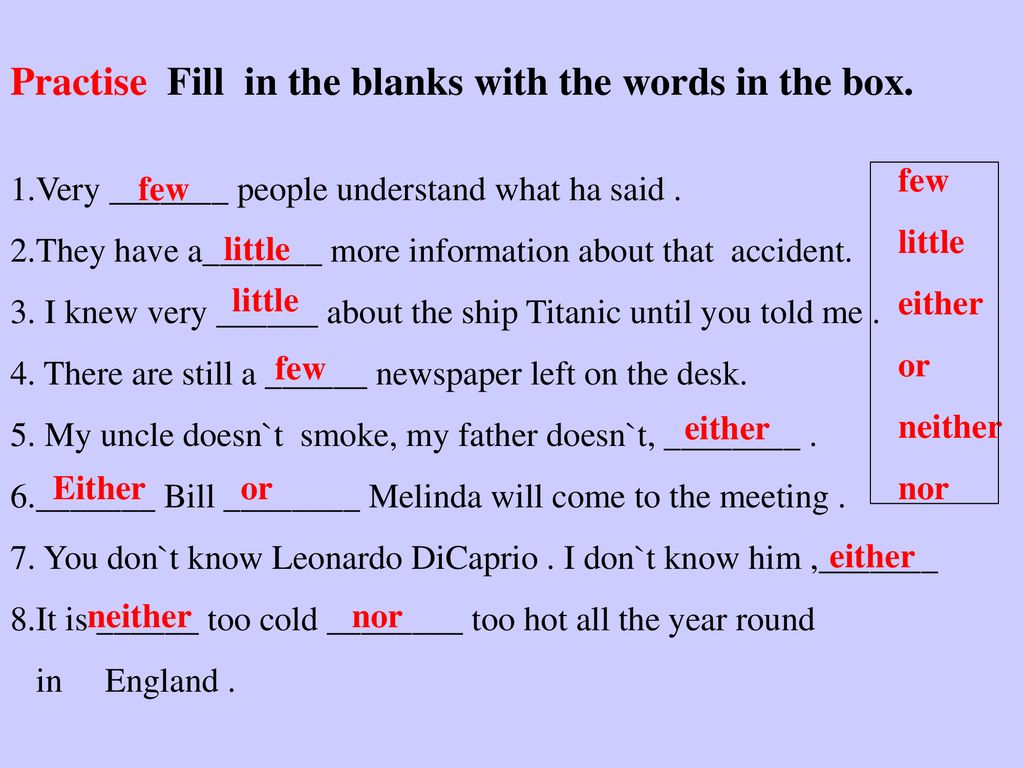
Baby prefers one side
Sometimes babies will refuse or fuss at a breast when the let-down is slower or too forceful, or the supply a bit lower. They in turn will prefer the side which lets down more/less quickly and in which the supply is more bountiful. See also: Lopsided! What can I do?
Fussy in the evening
Many young babies tend to pull off and fuss at the breast in the evening. See the article Cluster Feeding and Fussy Evenings.
Teething
Teething can cause fussy nursing behavior, as some babies experience gum discomfort with sucking. Baby might start to nurse, but then pull off and cry or fuss and not want to nurse anymore. See Teething for more information and tips.
Thrush
Frequent pulling off the breast can be a symptom of thrush.
Stuffy nose
A stuffy nose can cause fussy nursing behavior. If your baby has a stuffy nose and is having a hard time breathing and nursing at the same time, see colds & congestion.
Allergy or food sensitivity
Some babies with allergies or food sensitivities exhibit fussy nursing behavior. Often when there is a sensitivity to something in mom’s diet, baby will come to the breast hungry but when she tastes/smells something in the milk that will cause her GI distress, she pulls off, bats her head back and forth, etc. Sensitivities to foods in mom’s diet are rare. If this is the problem, you will most likely notice other symptoms, such as excessive spitting up or vomiting, colic, diarrhea, rash, persistent congestion or runny nose, or excessive gas. More information on food sensitivities in babies and links to more allergy information can be found in my article Dairy and other Food Sensitivities in Breastfed Babies.
Low milk supply
Low milk supply can cause baby to be fussy at the breast. If you feel that your milk supply may be low, see this page for more info: Increasing low milk supply.
Reflux
Reflux can result in baby being fussy at the breast. See Reflux and Breastfeeding for more information.
See Reflux and Breastfeeding for more information.
Tongue-Tie
Tongue-Tie can result in baby being fussy at the breast. See Breastfeeding a Baby with Tongue-Tie (Resources) for more information.
90,000 12 causes of concern for a child when breastfeeding. Why does a baby cry during breastfeeding
In the first weeks after birth, a newborn and his mother only get used to each other, and much of the baby's behavior is unclear to the mother. Why, for example, does a child worry at the breast during feeding? There are many reasons for this, and we decided to describe them and offer ways to overcome difficulties. Let's start with the cause of the child's anxiety, which mothers call the first, but which really exists least of all. nine0004
Lack of milk
This is the first thing that comes to the mind of a nursing mother whose baby cries a lot, including at the breast. One of the biggest challenges with breastfeeding, oddly enough, is that breastfeeding moms don't know exactly how much milk their babies are getting or if they're getting enough.
If your child is overly restless, most outside well-wishers will likely point out to you that the baby is probably hungry. Since you are a mother, such remarks can make you feel guilty. After all, it is your responsibility to feed the child! How to dispel doubts and fears associated with a lack of milk? nine0005
- Watch your baby urinate and defecate. After the sixth day of life, you should receive at least six wet diapers and one dirty diaper per day. If so, then your baby is getting enough milk.
- Frequent feedings are normal. In the first few weeks of life, a newborn usually needs 8-12 feedings per day. At the very beginning, you may at times have to keep it near your chest almost all the time. For several hours, he will demand it very often, and then fall asleep for four to five hours. As the baby learns to suckle more effectively, the number of feeds decreases. nine0016
- Keep track of your baby's weight.
 By two weeks, the baby should have regained the weight it was born with and gain at least 150 grams per week for the next two to three months.
By two weeks, the baby should have regained the weight it was born with and gain at least 150 grams per week for the next two to three months.
If you are still worried that you are not getting enough milk, you may find it helpful to have a lactation consultant who will monitor, assess your baby's weight gain and suggest ways to increase your milk supply, if needed.
Swelling of the breast
Sometimes the child's restless behavior at the breast is caused by breast swelling. Excessive breast swelling most often occurs in the first weeks after childbirth. To reduce it, express some milk manually or with a quality breast pump to make the breast softer and easier for the baby to take it. Don't express too much milk, as this can cause you to produce too much milk later on, which will only make the swelling worse. Apply cold compresses to your breasts between feedings to reduce swelling and soreness. nine0005
Flat or indented nipples
Also, the baby may be nervous to latch onto the breast if the mother has flat or indented nipples. To stretch them, you can wear special pads between feedings. Turning on the pump for a few minutes before putting the baby to the breast will help elongate the nipples and also start the flow of milk so that the baby will immediately receive it and is more likely to continue sucking instead of dropping the breast and crying.
To stretch them, you can wear special pads between feedings. Turning on the pump for a few minutes before putting the baby to the breast will help elongate the nipples and also start the flow of milk so that the baby will immediately receive it and is more likely to continue sucking instead of dropping the breast and crying.
In some cases, a woman has to use pads that encourage sucking until her nipples become more prominent. This should happen after about two to four weeks of breastfeeding. If you are having trouble with flat or sunken nipples, seek help from a lactation consultant as soon as possible. nine0005
Incorrect attachment, awkward posture
Another cause of restless behavior at the chest is incorrect position . Both the mother and the baby may be uncomfortable, due to which the effect on the breast is not as it should be, and a sufficient flow of milk is disturbed. If your baby is very nervous, your best bet is to use the underarm position (when you hold the baby to your side, holding him tightly against your nearest breast) or the "cradle" position (when you hold the baby horizontally at your chest), as these positions allow you to control his head. nine0005
nine0005
These postures allow you to guide the baby to the breast and hold him there. The baby's nose and chin should be pressed into the mother's chest. As a rule, he suckles better when his mother holds him tightly. If something makes you feel uncomfortable while feeding, contact a consultant. Perhaps this is the reason for your baby's anxiety.
Gastroesophageal reflux
Almost all children have some degree of gastroesophageal reflux. This medical term refers to a condition in which the annular muscle (sphincter) that blocks the entrance to the stomach has not yet fully formed and does not always completely close the opening. Because of this, some milk, along with gastric juice, can flow back into the esophagus, causing a sensation that we call "heartburn." nine0005
As anyone who has ever experienced it knows, it is quite an unpleasant sensation. Just as an adult can relieve heartburn by sitting with a straight back, a child can also usually benefit from being held upright.
Sometimes reflux can occur during feeding. Its appearance can be prevented by holding the child more upright or periodically taking breaks so that the baby “stood” a little. As the child develops, so does the musculature, so that cases of reflux become rarer. nine0005
Sometimes the problem is so severe that the child is unable to eat normally due to reflux. In such cases, you must consult a doctor.
Increased flatulence
All newborns have flatulence . When a child begins to eat, he starts reflex gas production, which is necessary for the waste generated during nutrition to be removed from the body more quickly. This prevents constipation.
Since breast milk is very easy to digest, it takes very little time for this food to pass through the baby's gastrointestinal tract. You can often hear characteristic sounds while the baby is still suckling. Although all children have gas, some tolerate it better than others. The time of day can also influence this. Apparently, the problem of flatulence becomes more noticeable at the end of the day. Traditionally, this time is considered the most hectic. The child seems to not want to let go of the breast at all, and this, in turn, can aggravate flatulence. This problem disappears on its own as the baby develops. nine0005
Apparently, the problem of flatulence becomes more noticeable at the end of the day. Traditionally, this time is considered the most hectic. The child seems to not want to let go of the breast at all, and this, in turn, can aggravate flatulence. This problem disappears on its own as the baby develops. nine0005
How to calm a crying baby
Many of the methods that promote calming are somehow related to the imitation of intrauterine conditions. Make sure that the air temperature is comfortable - not too hot and not too cool. Change diapers promptly. The baby can feel peace if he is held tightly to him or rocked. Swaddling or monotonous sounds - music or the buzzing of electrical appliances - may turn out to be effective. You can carry your baby in a sling, thereby providing him with comfort and getting the opportunity to do some business at the same time. nine0028 You can involve one of the family members in calming the child - for example, a father, grandmother or grandfather; in this case, the baby will not feel the smell of breast milk coming from the mother, which can excite him. In addition, this will give the mother the opportunity to devote some time to herself.
In addition, this will give the mother the opportunity to devote some time to herself.
Physiological lactase deficiency
At the beginning of feeding, mother's milk is more saturated with milk sugar - lactose. It's called "front". After 10-15 minutes of feeding with the same breast, she begins to produce "hind" milk. It is richer in fats, which neutralize lactose and thereby reduce gas formation. If the baby is getting too much foremilk and not getting enough hindmilk, an excess of lactose and a lack of the lactase enzyme, which increases flatulence.
Try to have your baby suckle from one breast for at least 12-15 minutes to get the hind milk. When the baby grows up and sucks more efficiently, it will get to him in a shorter period of time after the start of feeding. Hindmilk has a calming effect and helps restless babies fall asleep. Most newborns naturally fall asleep at the end of a feed due to the calming action of hindmilk. nine0005
The baby chokes on milk
While the baby is just learning to breastfeed, the so-called milk ejection reflex can be too powerful for him and lead to him choking. Because of this, the baby can drop the breast and start to get nervous. Press firmly on the breast for about a minute to stop the too rapid flow of milk, and then put the baby back on the breast. Try expressing some milk before feeding and see if you can trigger the ejection reflex before the baby takes the breast. Feed your baby in the underarm position. As the baby gets older, it will be able to cope with the consequences of the milk ejection reflex in any position for feeding without any problems. nine0005
Because of this, the baby can drop the breast and start to get nervous. Press firmly on the breast for about a minute to stop the too rapid flow of milk, and then put the baby back on the breast. Try expressing some milk before feeding and see if you can trigger the ejection reflex before the baby takes the breast. Feed your baby in the underarm position. As the baby gets older, it will be able to cope with the consequences of the milk ejection reflex in any position for feeding without any problems. nine0005
Smell
In rare cases, the baby becomes nervous and throws up the breast because of the soaps or creams you put on the breasts or nipples . If you start using some new remedy, and the child becomes more nervous, wash it off and start feeding again.
Thrush
The baby may develop a yeast infection in the mouth or on the nipples - the so-called thrush. You will see white spots in the child's mouth.
Your nipples may become bright red or itchy and burn after feeding. During feeding, the baby may be more restless than usual.
During feeding, the baby may be more restless than usual.
See a doctor. If he confirms that you have a fungal infection, both you and the child will have to undergo treatment.
Too noisy and too bright
In some children, excessive anxiety is associated with overstimulation. They can behave more calmly during feeding if it takes place in a darkened and quiet room. nine0005
Wants to calm down with the breast
Before 12 weeks, babies have little ability to soothe themselves and often reach for the breast just for comfort. They begin to suck to calm down, not experiencing at this moment the need for food. For parents, this need of the baby should be on a par with all the other vital things that you provide to the child.
The main causes of restless behavior of the newborn disappear after the first six weeks. Some problems may exist for a little longer, but they are usually resolved by three months. nine0005
During this period, you must definitely take care of yourself. Eat well. Drink plenty of fluids and exercise outdoors. Try a variety of relaxation techniques—yoga, meditation, massage, or a warm bath—to help you get through the tough times.
Eat well. Drink plenty of fluids and exercise outdoors. Try a variety of relaxation techniques—yoga, meditation, massage, or a warm bath—to help you get through the tough times.
Share your feelings with the child's father and other family members, and have them take turns comforting, lulling, and rocking the child.
Set small goals for yourself, like reading one chapter from a book or going for a walk for 15 minutes. nine0028 Group classes for young mothers are very useful, because there you will find out that other mothers and their children, like you and your child, go through exactly the same period of adjustment.
The main thing you need to remember is that this is a very short period in your own life and the life of your baby. Try to hug and cuddle your child as often as possible to help him get through a difficult time for him. Together you will succeed.
12 reasons why breastfeeding is not just about milk
Breastfeeding is the right choice for expectant mothers and their babies.

Increasingly, at appointments, pediatricians on the day of a healthy child are faced with the problems of breastfeeding in new mothers. This problem is very relevant, because at the moment in the world there is a "boom" of breastfeeding, and that's fine.
It is important to remember that the best food for a baby is and will always be the mother's breast milk in the first year of life.
Breastfeeding is a natural process that replaces pregnancy and childbirth. A newborn and his mother equally need breastfeeding. nine0005
12 reasons why breastfeeding is not just about milk.
1. Calm down. Babies have a need to suck. Even when the baby is full, the baby can still continue to breastfeed. Even if you are scared by the thought that your baby is “hanging on his chest” too much and for you this means that he is not full, then this is not so. The child has one of the most pronounced reflexes in the first weeks of life - the sucking reflex. And best of all, he satisfies him naturally, and not through pacifiers or bottles. nine0005
nine0005
2. Analgesic effect. Attachment to the chest helps to remove pain from cutting teeth, ear pain and other similar phenomena. Note that this is not always the case. If your child is restless on the chest, draws his legs during feeding, is naughty, hits his ears, then it is best to contact a specialist to examine the child.
3. Quenching thirst. Breast milk contains a lot of water, so the baby can take it if he wants to drink, but not eat.
It is important not to supplement your breastfeeding baby! If your personal physician or consultant claims otherwise, you should consider another candidate. Supplementation with water takes place to be bottle-fed. Don't force your child to drink water if he doesn't want to. nine0005
4. Natural medicine. If a child is sick, he may ask for a breast more often, because his body dictates to him so. Babies are less likely to get sick while breastfed. Most often, parents do not experience respiratory diseases in the first year of a child's life.
5. Relaxation. When the baby is overworked or frightened, the chest will help to relax and calm him down. First of all, here plays the role of contact between mother and child. The baby has no one dearer and closer than the mother, and this will continue for the first years, until the child socializes and feels himself in society. Mom is like a whole world for him, and when a child feels warmth and mother's touch, he feels completely safe. At the time of breastfeeding, this is especially pronounced. nine0005
6. Sleeping pills. An interesting fact: at night, the level of melatonin, a natural sleeping pill for an infant, rises in breast milk. Perhaps that is why most babies fall asleep on their breasts with ease. And at the same time they continue to suck
7. Breast milk is easily digested. There is no danger of overfeeding the baby, you can breastfeed whenever you ask. When feeding with a mixture, you should always monitor the amount eaten per day.
8. Sucking regulates milk production. Every time a baby is breastfed, it shows the mother's body how much milk she needs. It is important not to skip breastfeeding on demand so that milk is produced in sufficient quantities. The same applies to the quality and composition of milk. nine0005
Every time a baby is breastfed, it shows the mother's body how much milk she needs. It is important not to skip breastfeeding on demand so that milk is produced in sufficient quantities. The same applies to the quality and composition of milk. nine0005
9. Attachment. When a baby suckles, the mother's body releases the hormone oxytocin, also known as the love hormone. And the truth is, every time you feed a child, you fall in love with each other even more.
10. Everything is free! Why buy bottles, breast pumps, bags...? Breast milk is both healthy and free. No bottles and nipples, it's better to once again spend money on really necessary or pleasant things for the baby, or for yourself)
11. Breast milk from the breast is always at the ideal temperature. No need to freeze, defrost, heat…
13. You can get enough sleep while breastfeeding☺ Believe it or not, many breastfeeding moms say they get enough sleep even though no one helps them with nighttime feeds. And the reason is that they don't have to get out of bed to cook and heat the formula.


